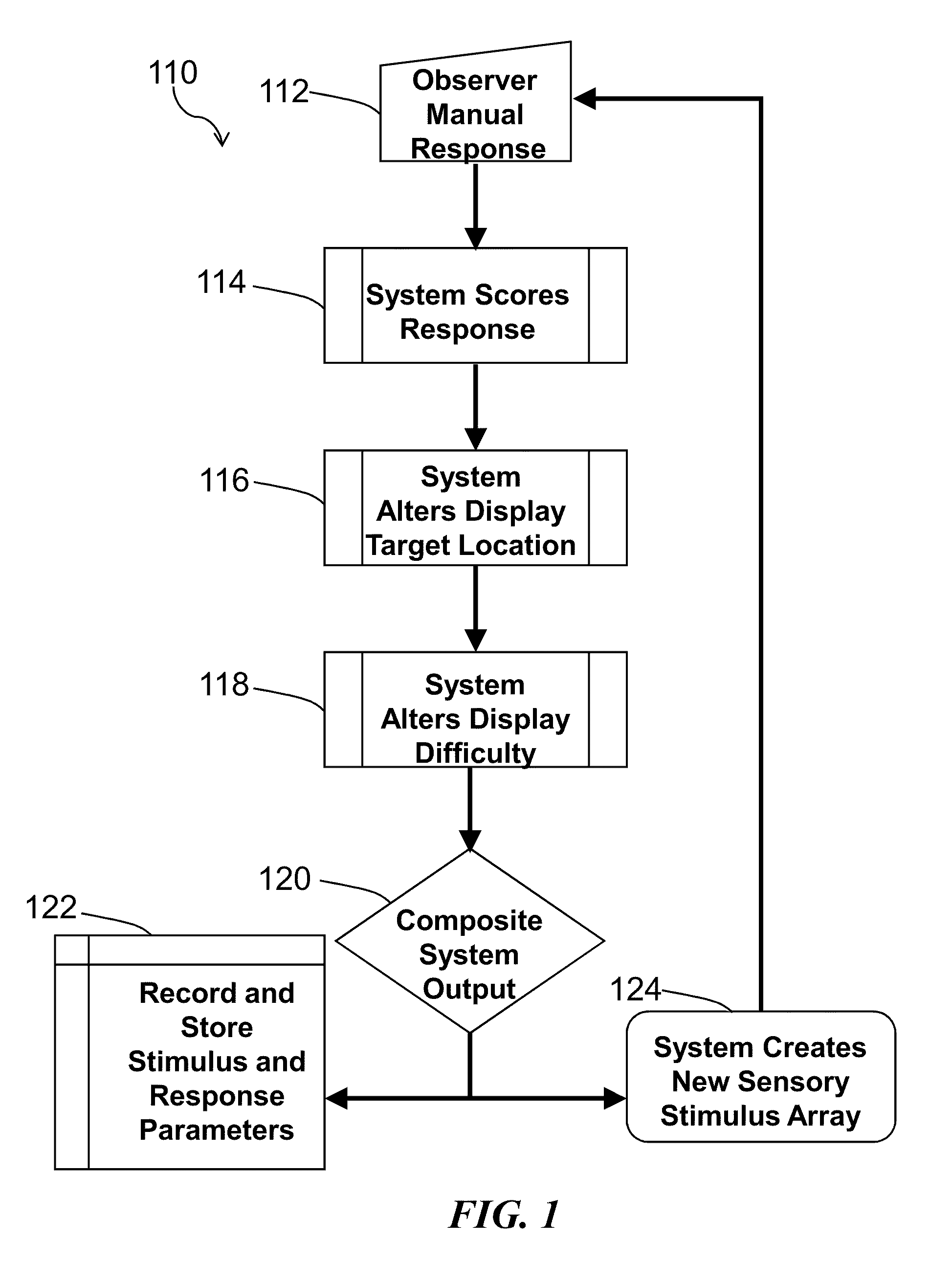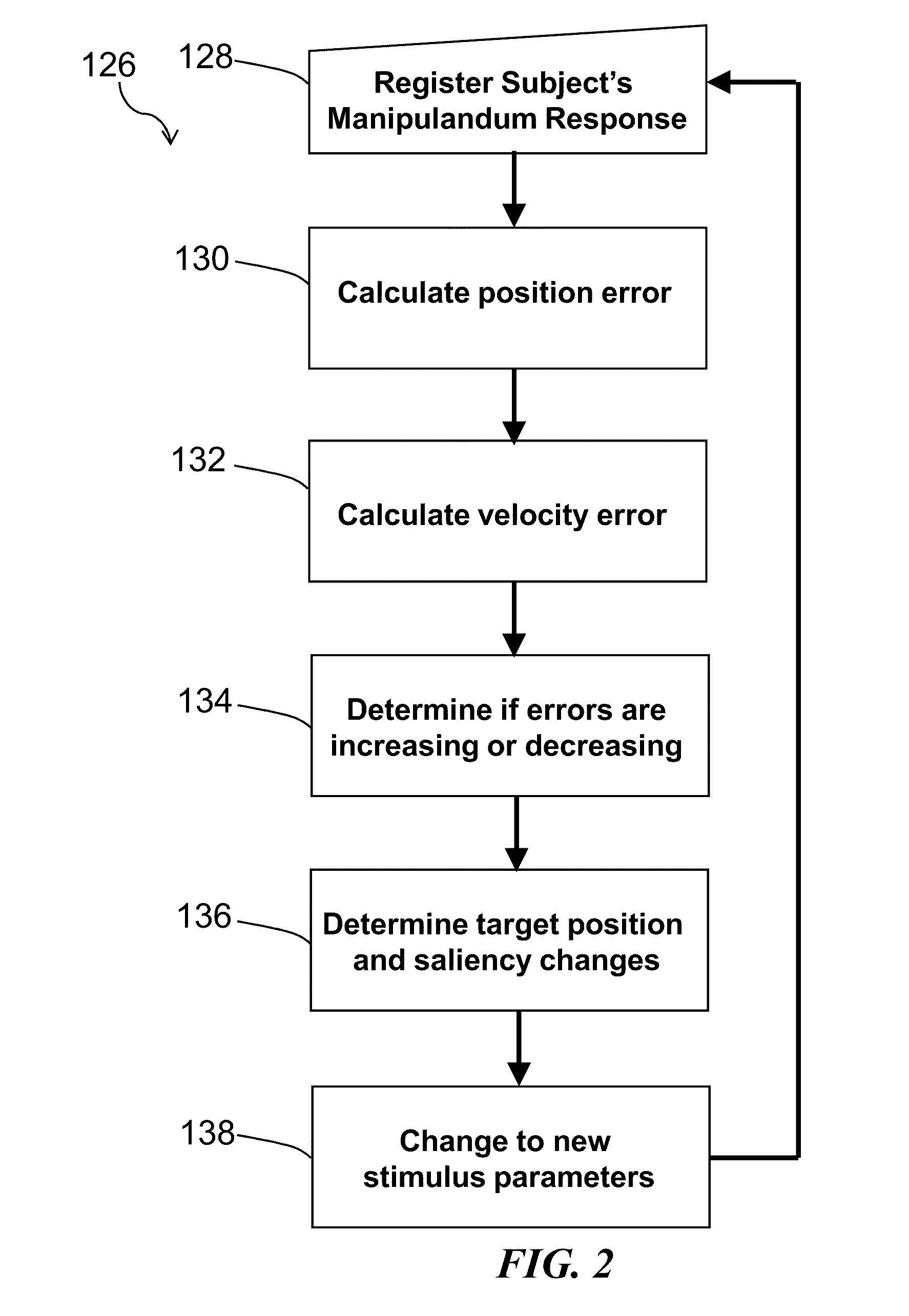Method and system for quantitative assessment of visual form discrimination
a visual form and quantitative assessment technology, applied in the field of psychophysics, can solve the problems of many visual abnormalities that are unlikely to be discovered, many visual abnormalities are impaired by neural dysfunctions, and many visual abnormalities are unlikely to be uncovered, so as to improve the complexity of experimental paradigms and simplify the
- Summary
- Abstract
- Description
- Claims
- Application Information
AI Technical Summary
Benefits of technology
Problems solved by technology
Method used
Image
Examples
Embodiment Construction
[0113]The present disclosure is related to the subject matter disclosed in the following co-pending applications filed on [insert date] and each naming Charles Joseph Duffy as the inventor: Ser. No. 12 / 560,583 and entitled METHOD AND SYSTEM FOR QUANTITATIVE ASSESSMENT OF FUNCTIONAL IMPAIRMENT and Ser. No. 12 / 560,605 and entitled METHOD AND SYSTEM FOR QUANTITATIVE ASSESSMENT OF VISUAL MOTOR RESPONSE and Ser. No. 12 / 560,642 and entitled METHOD AND SYSTEM FOR QUANTITATIVE ASSESSMENT OF VISUAL CONTRAST SENSITIVITY.
[0114]In describing embodiments of the present invention illustrated in the drawings, specific terminology is employed for the sake of clarity. In the present specification, an embodiment showing a singular component should not be considered limiting. Rather, the subject matter encompasses other embodiments including a plurality of the same component, and vice-versa, unless explicitly stated otherwise herein. Moreover, applicant does not intend for any term in the specificatio...
PUM
 Login to View More
Login to View More Abstract
Description
Claims
Application Information
 Login to View More
Login to View More - R&D
- Intellectual Property
- Life Sciences
- Materials
- Tech Scout
- Unparalleled Data Quality
- Higher Quality Content
- 60% Fewer Hallucinations
Browse by: Latest US Patents, China's latest patents, Technical Efficacy Thesaurus, Application Domain, Technology Topic, Popular Technical Reports.
© 2025 PatSnap. All rights reserved.Legal|Privacy policy|Modern Slavery Act Transparency Statement|Sitemap|About US| Contact US: help@patsnap.com



